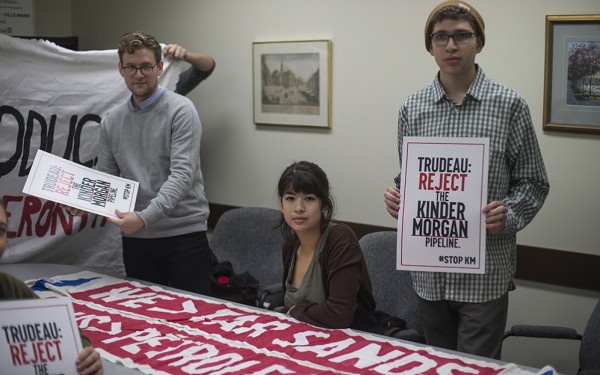Justin Trudeau Is No Environmentalist
The new nation-wide carbon tax may looks good at first glance, but were not going to get anywhere if we keep expanding the fossil industry.
In line with his incentive to reduce Canada’s carbon emissions in compliance with the recently signed Paris Agreement on climate change, Justin Trudeau announced on Monday, Oct. 3 that provinces would all be forced to adopt a mandatory carbon tax. The tax would start at a minimum of 10 dollars per tonne emitted by 2018, rising to a minimum of 50 per tonne by 2022. The goal being to reduce our emissions by 30 per cent from 2005 levels by 2030.
In theory, since companies with imposed carbon taxes stand to save by reducing their carbon footprint, the expectation is that their CO2 emissions will go down. This should, in theory, prioritize research and investment in renewable energy—since they will be taxed far less, making them a more attractive industry to invest in.
I’m not buying it, though. Trudeau’s words craft an image of him being concerned about carbon emissions and climate change, but his actions say otherwise.
Just two weeks ago, he approved the proposed North Pacific Liquefied Natural Gas project planned for the coast of British Columbia. If the LNG project goes through, it’s estimated that it would release an additional 5.3 million tonnes of CO2 per year, and between another 6.5 million to 8.7 million tonnes per year from natural gas collection and transportation.
This would increase B.C.’s carbon emissions by 8.5 percent—which is a shame since the province had a lot of success with the carbon tax they implemented in 2008, which lowered their fossil fuel use by 16 per cent by 2014. If Trudeau really cared about lowering CO2 emissions, why would he want to offset that progress? Or continue to push for pipelines constantly, like the Kinder Morgan and Energy East pipelines?
It makes me wonder: does Trudeau actually care about meeting targets against climate change, or is he just expanding the fossil fuel industry so that the Liberal government can take a cut of the profit using a carbon tax?
As it stands, we haven’t even been offered an answer as to where the revenue from the carbon tax will go. If the money was being used to invest in green energy, maybe Trudeau’s argument would be a little more convincing—but there’s no mention of that so far.
It’s not just those in the industry who’ll be forced to pay the price, but all of us. A carbon tax means a higher cost of living. Expect higher prices on gas, transportation, as well as food and goods, since gas is needed to transport those goods to us.
This applies to Quebec as well. Our cap and trade system currently imposes a 16 dollar per-tonne carbon tax, but by 2019 that tax will raise to 20 dollars per tonne. Another added 10 dollars will be added per year to adhere to the nationwide plan.
Carbon taxes don’t put a strict limit on CO2 production—companies can emit as much as they want as long as they pay the taxes. I’m not claiming to have the perfect solution, but maybe a cap and trade system is a better alternative.
Under this kind of system, companies are allowed to emit only up to a certain amount of carbon, which is decided on by the government. If a polluter wants to go above that, they must buy permits from other companies who are willing to sell. Using this system, countries can ensure that their emissions released match their countries targets—a carbon tax can’t force that though, instead it assumes people will change.
Carbon taxes do have benefits—B.C. has a great success story with them. From the taxes’ implementation in 2008 to 2014, the province saw a 16 per cent drop in fuel use. But it’s dangerous to assume industries all around Canada will be willing to adapt to our country’s targets.
As flawed as it is, there is probably quite a bit we could gain from implementing carbon taxes. But even in a best-case scenario, these gains won’t be significant enough if Trudeau keeps offsetting them by approving giant fossil fuel projects left and right like North Pacific LNG, the Kinder Morgan pipeline, or the Energy East Pipeline.



WebEdit__600_375_90_s_c1.jpg)


